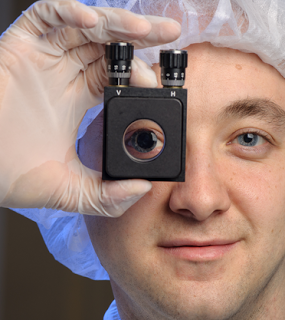

| Visitors Now: | |
| Total Visits: | |
| Total Stories: |

| Story Views | |
| Now: | |
| Last Hour: | |
| Last 24 Hours: | |
| Total: | |
NASA Designs New Space Telescope Optics to Directly Image Exoplanets and detect biosignatures
From
Although hundreds of planets orbiting other stars have been discovered in the past 15 years, we cannot yet answer the age-old question of whether any of these planets are capable of sustaining life. However, new NASA technology may change that, by giving us our first look at distant planets that not only are the right size and traveling in the temperate habitable zone of their host star, but also show signs of potential life, such as atmospheric oxygen and liquid water.
Research scientists at NASA's Ames Research Center, Moffett Field, Calif., are developing new space telescope optics that won’t just detect planets similar to Earth, but actually take photos of them. To take photos, called “direct imaging,” a new technology will be used called phase-induced amplitude apodization (PIAA). In development since 2003, it is a proof-of-concept and technology tested prototype that is a strong candidate for NASA's upcoming direct imaging exoplanet missions expected to launch in the 2020 decade and beyond.
“By blocking the glare and diffraction from the star, we can start seeing planets that would otherwise be obscured. With this technology, direct imaging confirmation of a habitable zone exoplanet would happen for the first time,” said Ruslan Belikov, a NASA astrophycist and technical lead of the coronagraph technical experiment at Ames.
The PIAA system uses two specially designed non-spherical optics to reshape the light in the pupil of the telescope into a new “high-contrast” pupil pattern. Image credit: Dominic Hart
The EXoplanetary Circumstellar Environments and Disk Explorer (EXCEDE)
See more and subscribe to NextBigFuture at 2013-02-20 13:46:02 Source: http://nextbigfuture.com/2013/02/nasa-designs-new-space-telescope-optics.html
Source:



